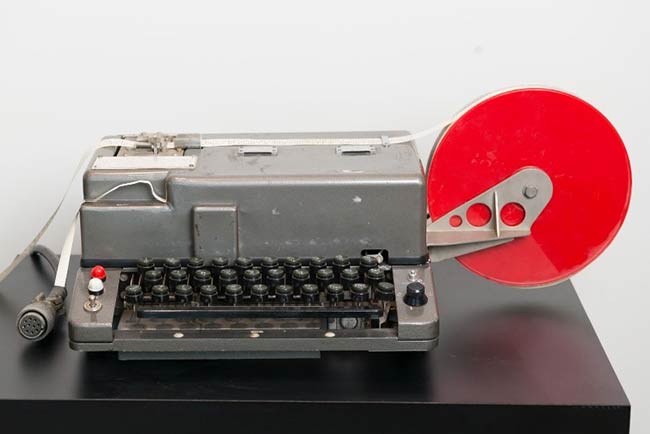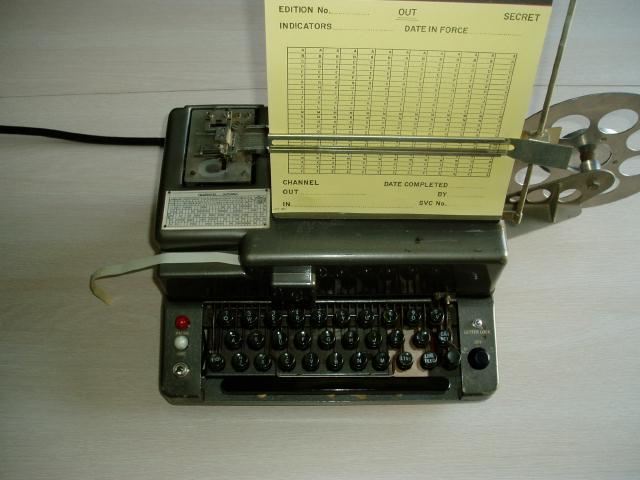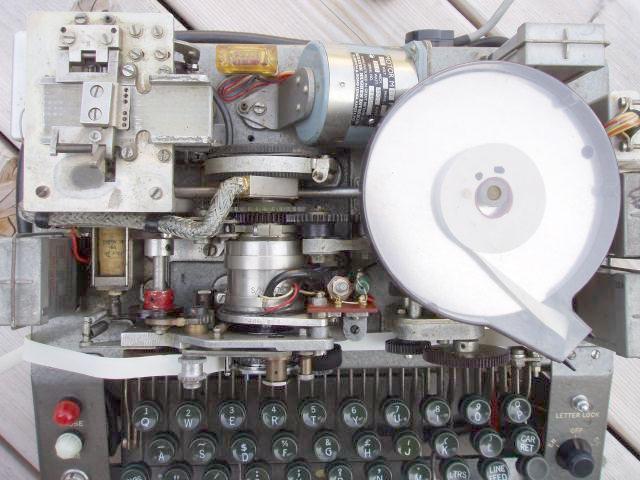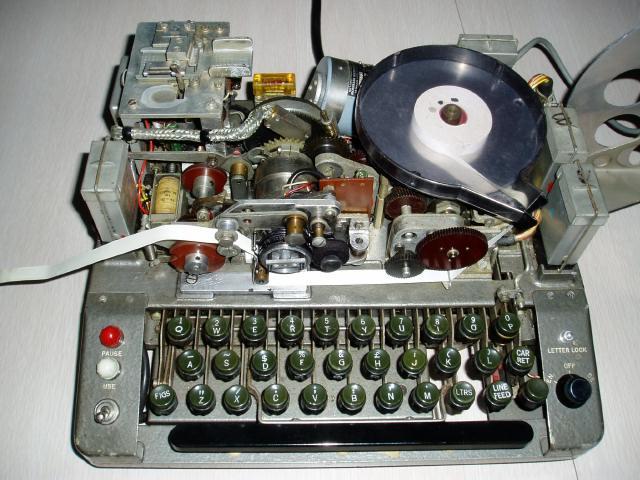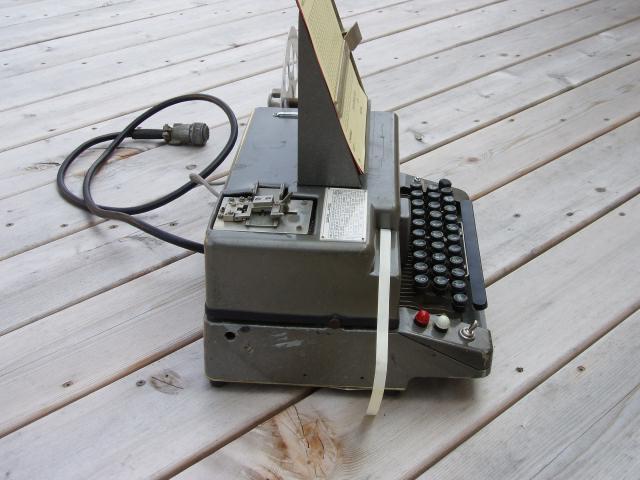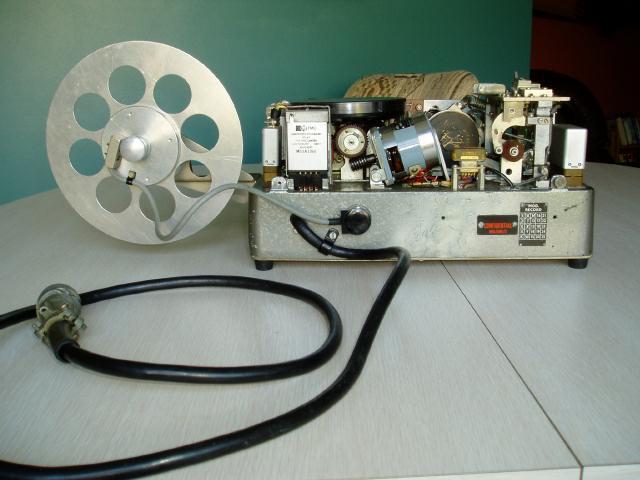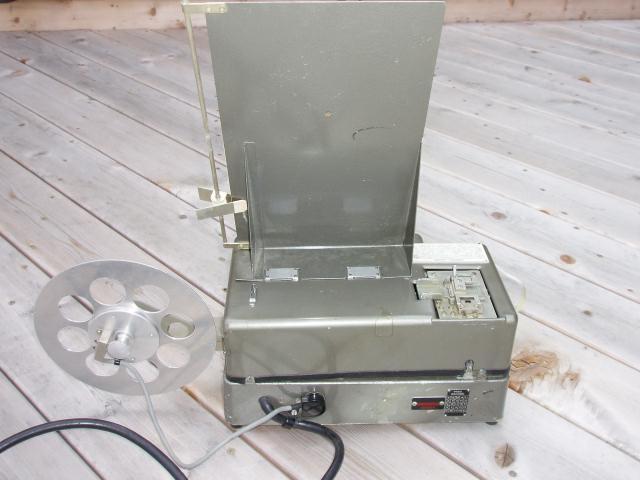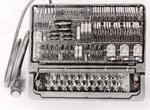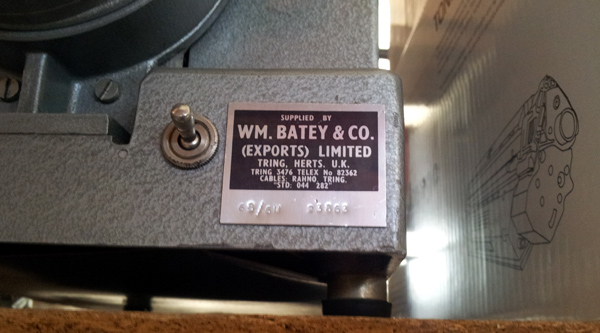The Noreen crypto unit came into being in the early 1960's and saw
service with Canada’s Foreign Affairs (External Affairs at the time) until
the early 1980’s. Her passing was probably not mourned by many, but
those who used her agreed she was a quantum leap forward from the days
of book cyphers.
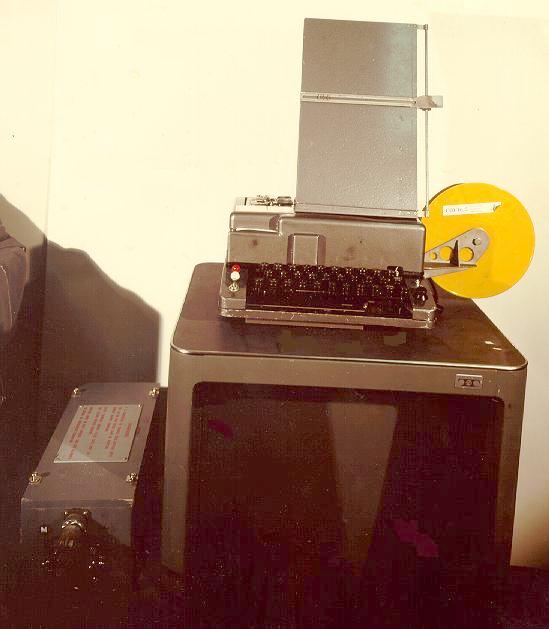 |
| The BID 590 was a British designed crypto machine and was used by Canada's Foreign Service Communicators at various diplomatic missions to communicate with various government departments. BID591 was the designator for the Instruction Manual. (Photo courtesy COMWEB Museum) |
Basic operations were fairly straight forward and routine but one’s environment could add to the fun when it came to using the gummed (sticky) tape that Noreen was famous for (reminders of TYPEX). For those communicators who lived and worked in the tropics, the gummed tape could get stuck on the work surface and just about anything else other than what one really wanted it stuck to. Things got even messier as the end of the roll of gummed tape was reached. The “gummer” tool for sticking the tape to blank paper pages was always a challenge as well. Tongues were not unknown as a substitute – and the result was a “bad taste” to go along with the “bad water” some had to endure.
Encryption procedures could be challenging: Message preparations were a team effort and the communicator relied on the secretaries to adhere to certain parameters, specifically, 69 characters per line, 25 lines to a page and so on. The Communicator would place the appropriate key tape (in this case YELLOW) on the reel, place the key tape under the gate on the first indicator block, move a switch to EN (encode) and begin typing the plain language text.
If it was a long message, one ended up with an impressive pile of gummed tape where, in especially humid conditions, the result could be a backlash that any novice fisherman would be proud of. Noreen has been described as an “intransigent beast” which, while actually doing a fairly decent job, could be most irritating with the hesitations one had to endure after hitting a key and experiencing the resulting action by the machine – something around a half-second but, coupled with its pauses for the indicator blocks, and the non-printing characters such as a line feed or letter shift would result in a rhythm that did not match the normal typing patter that most Communicators were accustomed to.
There was one little process that was the bane of any communicators that actually followed these procedures, and that involved verifying the message using something called “Check Decrypt”. Operators were expected to start a decrypt at the beginning of the message for approximately 25 groups, then another 25 groups in the middle of the message and then the final 25 groups. The decrypted groups were to be pasted on the back of the outgoing message form as proof the operator actually used the check decrypt process. Because a red decrypt reel differed from a yellow encrypt reel, a supplied washer was used to hold the sensor up while the red key tape reel was in the reel holder – it served to “fool” Noreen into thinking a yellow reel was being used. The operator could not do a “check decrypt” if the yellow reel was in the machine.
Once the encryption process was complete, the real fun began with the communicator now having to stick down the gummed tape (consisting of 5 letter groups) on plain paper sheets with the rule of 10 groups to a line and 5 lines to a block. Once that messy task was complete (and please don’t mix the pages up), it was over to a teleprinter to type up a tape consisting of all these 5 letter groups (and woe to those who were less than stellar typists). Following this task, the teletype tape was then transmitted. Message done!
Click to enlarge images
Decryption was basically a reverse process of the above. The operator would insert a RED keytaape on the reel, place the crypto tape on the first indicator block, move a switch to DE (decode) and begin typing the 5 letter groups. Any line hits or typos by the originating communicator would result in some garbled text but this would be corrected on the fly when typing the final copy. Again, the gummed tape of plain language text would be posted on blank paper sheets and this would be typed on a teleprinter to produce a final copy for the recipient.
Lots of typing? – You bet! Sticky tape problems – often!
The Noreen had a mind of its own. A couple of former communicators described things this way. “In all fairness to the “little Bitch”, she wasn’t so bad once you got the knack of typing on her. You pushed hard, and felt resistance and kept pushing until the key finally depressed and then on to the next one. I was satisfied with my ability to type on the Noreen but I can assure you we had some Communicators that could really make her sing”
“Noreen was the particular expertise of one of our technicians. He could tune them so we could get much more from them that the manufacturers claimed. I believe the posted speed was around 10-12 words per minute (WPM), but this tech could coax them up to around 15. Aside from the usual idiosyncrasies that Noreen presented, our machines worked quite well.”
For those with sharp eyes, a lock button can be seen on the front panel of the Noreen. This little button would put the printing mechanism back into letters if the operator made a type that resulted in figures vice letters. Those same sharp eyes might have noted that the keytape reels were identical to those used in Rockex machines.
And to answer the obvious question, yes, one could use a Noreen to encode and a Rockex to decode the same message and more than one sharp individual took advantage of that fact. A testimonial from a retired Foreign Affairs technician reads thusly:
“I remember when I was asked to go into Vietnam to close the embassy in l975; I took a Noreen with as the communicator was severely overloaded with traffic in the falling days of Saigon. Upon arriving and seeing the backlog, I shared the fact that when posted in Saigon in 1970 I maintained the Rockex at the Australian Embassy. A little P.R. visit to the Aussies who had no technician at the time and some of my natural charm resulted in an offer to use their Rockex and their comcentre from 18:00 until the next morning. As a result, the communicator and I would spend 5 or 6 solid hours decyphering all the Noreen messages that otherwise would have been impossible to do in the same timeframe with our 12 wpm Noreen.
Yup, she was cranky and at times recalcitrant, but she was a quantum leap ahead of Book Cypher. We used her and abused her and when Rockex and BID610’s were introduced to our workplaces, no one was sad to say goodbye to the old girl. RIP old Lady.


